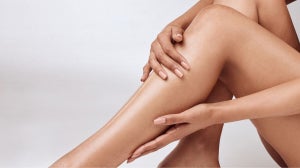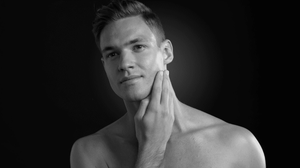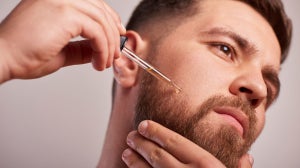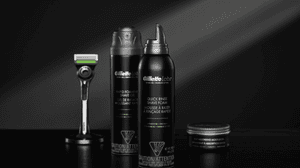
Dealing with ingrown hairs shouldn't be a problem. After all, once you know how to get rid of ingrown hair on your legs, you will be able to handle any future occurrences much more effectively. Not every ingrown hair on legs treatment suits everyone so it is best to learn how to prevent them from occurring in the first place with effective countermeasures. Read on to find out more about what to do about ingrown hair on legs and other parts of the body, as well. Nothing you'll learn will be hard to put into practice, after all!
What Causes Ingrown Hairs on Your Legs?
Before we delve any deeper into how to get rid of ingrown hair on legs, it will be useful to understand more about what causes them in the first place. There are five main reasons. Let's deal with each in turn.
Genetics
Simply put, some people are more susceptible to ingrown hair on legs and other body parts than others. If you have coarse or thick hair, then pay plenty of attention to the preventative measures in the first place.
Clogged Pores
When your skin's pores are not breathing properly and open, they can force hairs growing out of your follicles into unwanted directions, causing inward growth in some cases. Dead skin cells and some products can clog up pores so it's important to remove them.
Wrong Shaving Techniques
Shaving by pushing down hard onto your skin can lead to ingrown hairs. When shaving your legs, work lightly in the direction that your hairs grow in so they will grow back the same way meaning you're less likely to suffer from ingrown hairs.
Tight Clothing
Yes, tight clothes on your legs, including stockings, tights and leggings can all interfere with normal hair growth. Don't wear it all the time, especially when your leg hair is just starting to grow back.
Sensitive Skin
People with dry skin can find they're more susceptible to ingrown hairs. A fairly common condition like keratosis pilaris can also lead to more reliance on ingrown hair leg treatments but the good news is that they're usually effective. More widely, suffering from skin sensitivity may result in a greater incidence of ingrown hair on legs. Read the Venus guide on shaving with sensitive skin to find out about what to do if you have skin sensitivity.
Steps to Get Rid of Ingrown Hair on Legs
These are all good ingrown hair on legs treatments that you can try. Each will assist you in your quest for ingrown hair-free legs, so try them all!
Soak Your Legs in Warm Water
By allowing your skin to soak, you will make it much less likely that your subsequent shave will result in unwanted ingrown hairs. Luxuriate in the bath or shower for a little longer than you usually would before shaving. Like you needed an excuse away, right?
Exfoliate
With your skin relaxed and feeling elastic after your soak, you ought to exfoliate your skin properly. Exfoliation helps to clear pores and dead skin, making your shave more effective with less friction which can result in a razor rash, ingrown hairs or even shaving bumps on your legs.
Use the Right Razor
Shave with a razor that's been designed for leg hair, such as the Venus Deluxe Smooth Swirl Razor, for example. Steer clear of disposable razors which typically only have one or two blades to do the work which won't offer benefits like SkinCushion™ technology or microcombs that lift hairs up to shave them closely and effectively with fewer strokes.
Apply Minimal Pressure
Don't push down when shaving. Instead, allow the blades to move lightly over your skin removing hair as they go.
Rinse the Blades
Shaving with blades that have got clogged up with cut leg hairs and shaving cream won't be as effective in preventing ingrown hairs. Keep rinsing your blades in clean water to keep them working optimally. When they begin to dull, fit new ones, such as Venus Extra Smooth Swirl Blades. Doing so is almost always worth it!
Moisturise
After shaving, replenish your skin with a suitable moisturiser. This will help your skin and hair follicles to recover such that when your leg hair begins to grow back, it does so normally without inward growth.
How to Prevent Ingrown Hair on Your Legs
Pre-emptive exfoliation before shaving is a good way to prevent ingrown hair on legs from occurring in the first place, not just a way to treat them. As well as being a good way of how to get rid of ingrown hair on legs, pre-emptive exfoliation is also a sound technique for helping to prevent shaving bumps on legs, too. A mild exfoliation treatment, scrub or brush before shaving will help to remove dead skin cells that might block normal hair regrowth on your legs. If you want to find out more about how to get rid of shaving bumps on legs and how to prevent them, then take a look at this handy Venus guide.
Remember, too, that shaving in the right direction – with the natural growth of your body hairs – is another good tip for preventing ingrown hair on legs. After shaving, prioritise moisturising your legs. This will help your skin to recover without blocking its pores, something else that can lead to the presence of ingrown hairs.
How Long Does it Take to Get Rid of Ingrown Hairs on Legs?
Most people find that once they know how to get rid of ingrown hair on their legs they will only stick around for a couple of weeks. Any ingrown leg hair treatment should help to speed up the process but some people – especially people with coarser or curlier hair than average – may find that their ingrown hairs bury themselves longer and deeper which, understandably, means that getting rid of them may take longer. If they're hurting or look infected after more than a fortnight, seek a professional medical opinion. That said, fine ingrown hairs can clear up in a matter of days. Phew!
FAQs
Why do I have so many ingrown hairs on my upper legs?
The reason people have ingrown hairs on legs varies from individual to individual with genetics playing a significant role. If you have curly or coarse hair, then it is more likely you'll need an ingrown leg hair treatment from time to time. Since the upper legs often brush one another or are sometimes restricted by tight-fitting trousers, this is an area of the body where they are frequently more noticeable.
Do ingrown hairs go away on their own?
Yes, they do, typically within a couple of weeks. If your ingrown hair on legs treatment hasn't worked, then give it some time because they'll probably disappear of their own accord. Don't tweeze, pluck or wax the affected part(s) of your legs to allow this natural recovery process.
Should I pop an ingrown hair on my leg?
Popping an ingrown hair by hand could lead to an infection. It is not a recommended ingrown hair on legs treatment. If you want to relieve the pressure of an ingrown hair on your legs, then consider carefully inserting a sterile needle under each hair loop. Without breaking the skin, gently lift the hair's tip away from your skin so that it no longer faces back down into it. You might need a steady hand but the effort is often worth it!









